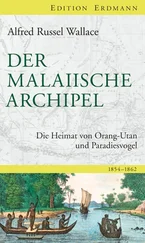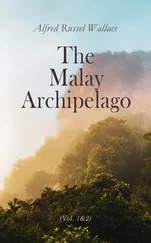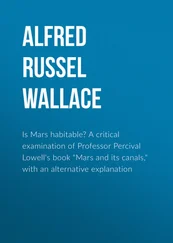Alfred Wallace - Travels on the Amazon
Здесь есть возможность читать онлайн «Alfred Wallace - Travels on the Amazon» — ознакомительный отрывок электронной книги совершенно бесплатно, а после прочтения отрывка купить полную версию. В некоторых случаях можно слушать аудио, скачать через торрент в формате fb2 и присутствует краткое содержание. Жанр: Путешествия и география, foreign_antique, foreign_prose, на английском языке. Описание произведения, (предисловие) а так же отзывы посетителей доступны на портале библиотеки ЛибКат.
- Название:Travels on the Amazon
- Автор:
- Жанр:
- Год:неизвестен
- ISBN:нет данных
- Рейтинг книги:4 / 5. Голосов: 1
-
Избранное:Добавить в избранное
- Отзывы:
-
Ваша оценка:
- 80
- 1
- 2
- 3
- 4
- 5
Travels on the Amazon: краткое содержание, описание и аннотация
Предлагаем к чтению аннотацию, описание, краткое содержание или предисловие (зависит от того, что написал сам автор книги «Travels on the Amazon»). Если вы не нашли необходимую информацию о книге — напишите в комментариях, мы постараемся отыскать её.
Travels on the Amazon — читать онлайн ознакомительный отрывок
Ниже представлен текст книги, разбитый по страницам. Система сохранения места последней прочитанной страницы, позволяет с удобством читать онлайн бесплатно книгу «Travels on the Amazon», без необходимости каждый раз заново искать на чём Вы остановились. Поставьте закладку, и сможете в любой момент перейти на страницу, на которой закончили чтение.
Интервал:
Закладка:
A jararáca, said to be one of the most deadly serpents in Brazil, was killed by a Negro in our garden. It was small, and not brightly coloured. A fine coral snake was also brought in; it was about a yard long, and beautifully marked with black, red, and yellow bands. Having, perhaps, had some experience of the lavish manner in which foreigners pay for such things, the man had the coolness to ask two milreis, or 4 s. 6 d. for it, so he had to throw it away, and got nothing. A penny or twopence is enough to give for such things, which are of no value to the natives; and though they will not search much after them for such a price, yet they will bring you all that come in their way when they know you will purchase them. Snakes were unpleasantly abundant at this time. I nearly trod on one about ten feet long, which rather startled me, and it, too, to judge by the rapid manner in which it glided away. I caught also a small Amphisbena under the coffee-trees in our garden. Though it is known to have no poison-fangs, the Negroes declared it was very dangerous, and that its bite could not be cured. It is commonly known as the two-headed snake, from the tail being blunt and the head scarcely visible; and they believe that if it is cut in two, and the two parts thrown some yards apart, they will come together again, and join into an entire animal.
Among the curious things we meet with in the woods are large heaps of earth and sand, sometimes by the roadside, and sometimes extending quite across the path, making the pedestrian ascend and descend (a pleasing variety in this flat country), and looking just as if some "Pará and Peru direct Railway Company" had commenced operations. These mounds are often thirty or forty feet long, by ten or fifteen wide, and about three or four feet high; but instead of being the work of a lot of railway labourers, we find it is all due to the industry of a native insect, the much-dreaded Saüba ant. This insect is of a light-red colour, about the size of our largest English species, the wood-ant, but with much more powerful jaws. It does great injury to young trees, and will sometimes strip them of their leaves in a single night. We often see, hurrying across the pathways, rows of small green leaves; these are the Saübas, each with a piece of leaf cut as smoothly as with scissors, and completely hiding the body from sight. The orange-tree is very subject to their attacks, and in our garden the young trees were each planted in the centre of a ring-shaped earthen vessel, which being filled with water completely surrounded the stem, preventing the ants from reaching it. Some places are so infested by them that it is useless planting anything. No means of destroying them are known, their numbers being so immense, as may readily be seen from the great quantities of earth they remove.
Many different kinds of wasps' and bees' nests are constantly met with; but we were rather shy of meddling with them. They are generally attached to the undersides of leaves, especially of the young Tucumá palm, which are broad, and offer a good shelter. Some are little flat domes, with a single small opening; others have the cells all exposed. Some have only two or three cells, others a great number. These are all of a delicate papery substance; but some have large cylindrical nests, on high trees, of a material like thick cardboard. Then again there are nests in hollow trees, and others among their roots in the earth, while the solitary species make little holes in the paths, and pierce the mud-walls of the houses, till they appear as if riddled with shot. Many of these insects sting very painfully; and some are so fierce, that on their nests being approached, they will fly out and attack the unwary passer-by. The larger kinds of wasps have very long stings, and can so greatly extend their bodies that we were often stung when endeavouring to secure them for our collections.
I also suffered a little from another of our insect enemies: the celebrated chigoe at length paid us a visit. I found a tender pimple on the side of my foot, which Isidora pronounced to be a "bicho do pé" or chigoe; so preferring to extract it myself, I set to work with a needle, but not being used to the operation, could not get it out entire. I then rubbed a little snuff in the wound, and afterwards felt no more of it. The insect is a minute flea, which burrows into the skin of the toes, where it grows into a large bag of eggs as big as a pea, the insect being just distinguishable as a black speck on one side of it. When it first enters it causes a slight irritation, and if found may then be easily extracted; but when it grows large it is very painful, and if neglected may produce a serious wound. With care and attention, however, this dreaded insect is not so annoying as the mosquito or our own domestic flea.
Having made arrangements for another and a longer visit to Magoary, we packed up our hammocks, nets, and boxes, and went on board a canoe which trades regularly to the mills, bringing the rice and timber, and taking whatever is required there. We left Pará about nine at night, when the tide served, and at five the next morning found the vessel lying at anchor, waiting for the flood. We were to proceed on to the mills in a montaria, or small Indian canoe, and as we were five with the Negroes who were to paddle, I felt rather nervous on finding that we sank the little boat to within two inches of the water's edge, and that a slight motion of any one of the party would be enough to swamp us altogether. However, there was no help for it, so off we went, but soon found that with its unusual load our boat leaked so much that we had to keep baling by turns with a calabash all the time. This was not very agreeable; but after a few miles we got used to it, and looked to the safe termination of our voyage as not altogether improbable.
The picturesque and novel appearance of the river's banks, as the sun rose, attracted all our attention. The stream, though but an insignificant tributary of the Amazon, was wider than the Thames. The banks were everywhere clothed with a dense forest. In places were numerous mangroves, their roots descending from the branches into the water, having a curious appearance; on some we saw the fruit germinating on the tree, sending out a shoot which would descend to the water, and form another root to the parent. Behind these rose large forest-trees, mingled with the Assai, Miriti, and other palms while passion-flowers and convolvuluses hung their festoons to the water's edge.
As we advanced the river became narrower, and about seven o'clock we landed, to stretch our cramped limbs, at a sitio, where there was a tree covered with the hanging nests of the yellow troupial, with numbers of the birds continually flying in and out. In an hour more we passed Larangeiras, a pretty spot, where there are a few huts, and the residence of Senhor C., the Commandante of the district. Further on we turned into a narrow igaripé, which wound about in the forest for a mile or two, when a sudden turn at length brought us the welcome sight of the mills. Here a hearty welcome from Mr. Leavens, and a good breakfast, quite compensated for our four hours' cramping in the montaria, and prepared us for an exploring expedition among the woods, paths, and lakes in the vicinity.
Our daily routine during our stay at the mills was as follows:—We rose at half-past five, when whoever pleased took a bath at the mill-stream. We then started, generally with our guns, into the forest, as early in the morning is the best time for shooting, and Mr. Leavens often accompanied us, to show us the best feeding-trees. At eight we returned to breakfast, and then again started off in search of insects and plants till dinner-time. After dinner we generally had another walk for an hour or two; and the rest of the evening was occupied in preparing and drying our captures, and in conversation. Sometimes we would start down the igaripé in the montaria, not returning till late in the afternoon; but it was in my early expeditions into the forest that I had my curiosity most gratified by the sight of many strange birds and other animals. Toucans and parrots were abundant, and the splendid blue and purple chatterers were also sometimes met with. Hummingbirds would dart by us, and disappear in the depths of the forest, and woodpeckers and creepers of various sizes and colours were running up the trunks and along the branches. The little red-headed and puff-throated manakins were also seen, and heard making a loud clapping noise with their wings which it seemed hardly possible for so small a bird to produce.
Читать дальшеИнтервал:
Закладка:
Похожие книги на «Travels on the Amazon»
Представляем Вашему вниманию похожие книги на «Travels on the Amazon» списком для выбора. Мы отобрали схожую по названию и смыслу литературу в надежде предоставить читателям больше вариантов отыскать новые, интересные, ещё непрочитанные произведения.
Обсуждение, отзывы о книге «Travels on the Amazon» и просто собственные мнения читателей. Оставьте ваши комментарии, напишите, что Вы думаете о произведении, его смысле или главных героях. Укажите что конкретно понравилось, а что нет, и почему Вы так считаете.












